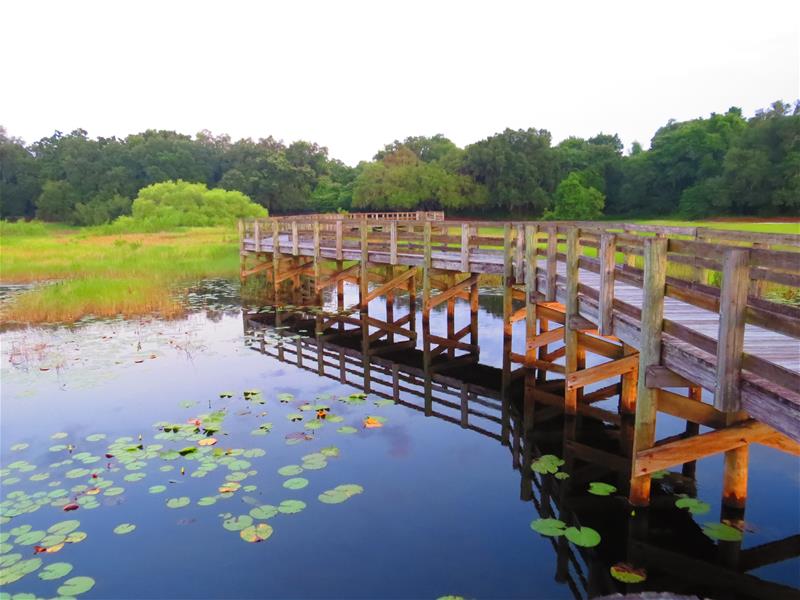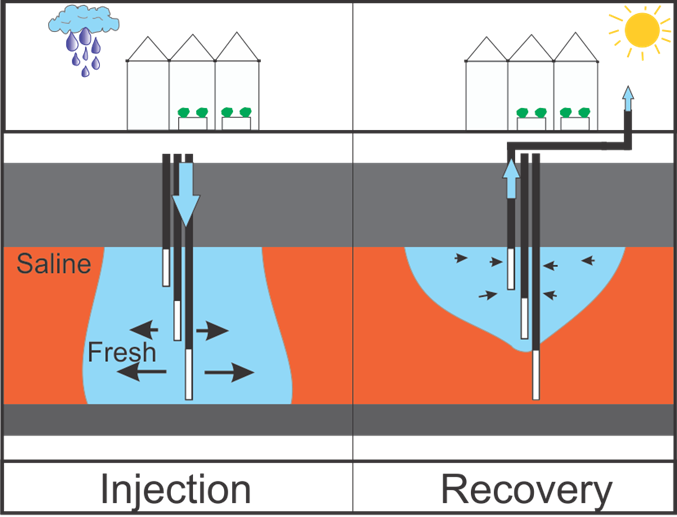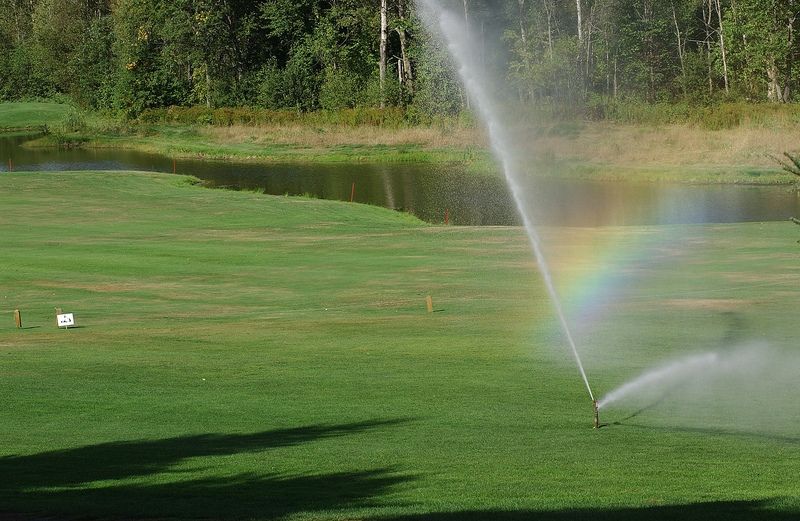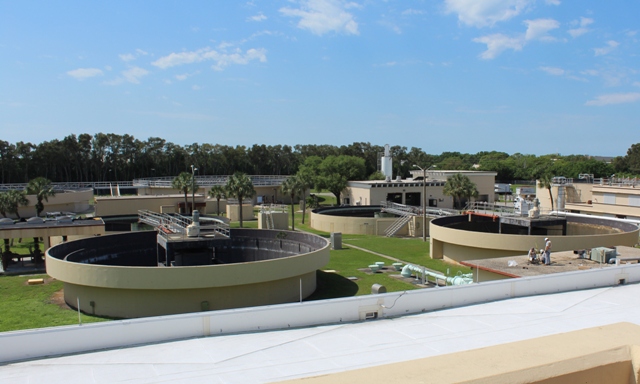County | Actual 2015 | Projected 2040 | ||||
|---|---|---|---|---|---|---|
WWTP Flow | Reuse | % Reuse | WWTP Flow | Reuse | % Reuse | |
Pasco | 29.8 | 17.9 | 60% | 40.1 | 30.1 | 75% |
Pinellas | 109.1 | 44.8 | 41% | 113.2 | 84.9 | 75% |
Hillsborough | 109.5 | 26.6 | 24% | 141.8 | 106.3 | 75% |
Manatee | 29.9 | 15.9 | 53% | 38.3 | 28.7 | 75% |
Total | 278.3 | 105.2 | 38% | 333.3 | 250 | 75% |
WW-1
Expand the beneficial use of reclaimed water
OBJECTIVES:
OBJECTIVES:
Encourage and expand beneficial water reuse to reduce nutrient loadings from wastewater discharges and enhance ecosystem benefits. Track the regional strategy and practices for Aquifer Storage and Recovery (ASR) and direct recharge projects to strengthen understanding of their cumulative effect on ground and surface water quantity and quality. Strengthen understanding of the contribution of nutrients and other constituents from beneficial uses of reclaimed water to Tampa Bay.
STATUS:
Ongoing. Nitrogen load estimates to Tampa Bay from all sources, including reclaimed water, were developed in 1994 and updated in 2001 and 2005. The Tampa Bay Nitrogen Management Consortium developed a Nutrient Management Strategy, with regular updates and assessments in 2007, 2009 and 2012 on the nitrogen loading reductions from reclaimed water projects. Estimates of nitrogen loading from irrigation were developed in 2008, leading to recommendations for reduced fertilizer application with reclaimed water irrigation incorporated into the Model Fertilizer Ordinance developed by TBEP. The potential presence, fate and transport of emerging contaminants of concern and microplastics in reclaimed water, wastewater, and other sanitary sewer systems warrants further investigation (see Action COC-4).
BACKGROUND:
Use of reclaimed water in the Tampa Bay watershed continues to grow rapidly, with dozens of new projects expected to be online by 2022, reducing the region’s dependence on groundwater while preventing nutrient-rich wastewater effluent from discharging into the bay. New technologies for treating and disposing of wastewater and stormwater are being tested and implemented, continuing to advance the Tampa Bay Area’s national reputation for innovation.

Reclaimed water can provide a valuable source of freshwater to the bay area — for example, to enhance wetlands, prevent saltwater intrusion into coastal areas or to augment low-salinity habitats identified as important for juvenile fisheries. For that reason, TBEP has encouraged water managers and local governments to retain reclaimed water within the bay watershed.
TBEP plays an important role in tracking nutrient load reduction from all projects, including reclaimed water initiatives, via the Tampa Bay Nitrogen Management Consortium’s Action Plan Database. Between 2017-2021, new load reduction projects reduced total nitrogen load by 420.9 tons/yr; about <1% from reuse/reclaimed water projects. The next calculation of nitrogen load reduction throughout the watershed will encompass 2022-2026. Additional planned and budgeted projects are expected to reduce TN loading by 70.5 tons/yr, with 10.5% from reuse and reclaimed projects.
In 2015, 38% of the flow from 49 permitted wastewater treatment plants (WWTPs) in the four-county Tampa Bay region was beneficially reused. Still, in 2015 more than 173 mgd of treated wastewater were released. In 2020, there were 22 reclaimed water projects under development across the 4-county area, including transmission pipelines, pump stations, storage tanks and ponds, aquifer recharge, storage and recovery systems and feasibility studies. These projects could supply an additional 49 mgd of reclaimed water to the region. In its 2020 Regional Water Supply Plan, the Southwest Florida Water Management District (SWFWMD) projected that by 2040 almost 75% of wastewater could be utilized across Pinellas, Pasco, Hillsborough and Manatee Counties.
Aquifer Storage and Recovery (ASR) systems have enormous potential for diverting highly treated wastewater flows from disposal into the bay and balancing wet and dry season supply-and-demand inefficiencies. Reclaimed ASR systems inject treated wastewater deep into various underground aquifers, where it is stored in porous rock. From there, it can be pumped back to the surface and distributed for residential, commercial and industrial use. Exploratory wells are drilled to ensure the reclaimed water can be safely stored in the local geologic formations; additional wells drilled around the reclaimed water injection well are monitored for any possible groundwater contamination.

There are several reclaimed water ASR facilities in the Tampa Bay Area, with two more under development by the cities of Oldsmar and Palmetto. Some recharge wells, when drilled near the coast with the right geologic conditions, can slow and potentially stop saltwater intrusion into the aquifer. For example, the South Hillsborough Aquifer Recharge Project (SHARP) is a pilot project designed to inject 2 mgd of highly treated reclaimed water into several wells in the Apollo Beach area to create a barrier to saltwater intrusion.
With additional treatment, reclaimed water can be injected directly to recharge the aquifer. The Clearwater Replenishment Project will use state-of-the-art treatment technology to purify 2.4 mgd of wastewater to exceed drinking water standards, then inject it into a brackish water zone below the fresh water zone of the Upper Florida Aquifer.
The City of Tampa, which produces approximately 58 mgd of Advanced Wastewater Treated (AWT) effluent on an average annual basis, has considered several strategies to store and recover reclaimed water in the Floridan aquifer for subsequent delivery to the Hillsborough River system.
Another method for “recycling” wastewater is by indirect aquifer recharge. Treated wastewater is released above ground to spray fields or to treatment and infiltration basins, typically man-made ponds or wetlands, where it can percolate back into groundwater. Pasco County relies primarily on spray-fields and rapid infiltration basins (RIBs); the county is conducting ongoing feasibility studies and planning for an innovative wetland recharge area in central Pasco County. In this public-private partnership among SWFWMD, Pasco County and land owners, wastewater effluent will be biologically treated and infiltrated through a series of constructed wetlands to reduce nutrient concentrations from 9 to 1 mg/L total nitrogen.
The City of Tampa conducted a feasibility study incorporating the use of RIBs and ASR wells for delivering AWT wastewater from the City of Tampa’s Howard F. Curren wastewater treatment plant to wetland areas along the Tampa Bypass Canal. From there, the water would seep into the ground and eventually into the Tampa Bypass Canal, potentially increasing water available for pumping into the Hillsborough River Reservoir.

Another potential use of reclaimed water is piping it from densely populated coastal areas to inland areas for reuse and/or recharge. For example, in 2016 the City of Bradenton completed a project to transfer 100% (5.57 mgd) of its reclaimed water to Lakewood Ranch for landscape irrigation — reducing direct surface water discharge in Manatee County by 90%. Similarly, there are opportunities to interconnect coastal WWTP utilities with spray fields and RIBs in eastern Pasco and Hillsborough Counties.
The City of St. Petersburg is designing an innovative wastewater reuse project at its Southwest Wastewater Reclamation Facility. The facility is being restructured to consolidate and treat biosolids, creating an alternative to traditional disposal and land application of this wastewater treatment byproduct. Biosolids will be transformed into higher fertilizer-grade biosolids suitable for sale in gardening centers. Bio-gas from the treatment process will be captured, cleansed and compressed for use on-site and as vehicle fuel.

Most reclaimed water construction projects include educational components that promote the value and benefits of efficient and effective water management. SWFWMD and local government utilities provide outreach to homeowners, school facility managers, government buildings, parks and open spaces, hospitals and golf courses on the proper application and maintenance of reclaimed water systems for landscaped areas. SWFWMD has a well-developed web page on water reclamation and reuse information, including GIS and other data, as well as educational publications. The Pinellas County South Cross Bayou Water Reclamation Facility and the St. Petersburg facilities offer tours and educational programming.
The Florida-Friendly Landscaping™ Program, delivered by UF/IFAS County Extension offices throughout the region, emphasizes water conservation and efficient use of alternative water sources for watering. Additional education is needed to inform residents, golf course and property managers that fertilizer application can be reduced or eliminated where reclaimed water is used for irrigation. This message was a key theme of TBEP’s Be Floridian fertilizer education campaign. Pinellas County currently provides an online map of reclaimed water service areas, with corresponding fertilizer recommendations. ( )